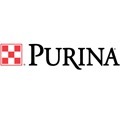 A heat-stressed sow is less likely to consume consistent levels of feed, [1] but how do we know when heat may be causing problems in the herd?
A heat-stressed sow is less likely to consume consistent levels of feed, [1] but how do we know when heat may be causing problems in the herd?
Researchers at Purina Animal Nutrition say it’s a combination of temperature and humidity that causes potential heat stress in sows; which can be evaluated with the Temperature Heat Index (THI).

“The combination of hot temperatures and humidity results in a high THI and can cause problems for the sow if we don’t account for it,” says Vern Pearson, PhD, swine nutritionist for Purina Animal Nutrition.
A high THI can impact the sow’s body temperature, resulting in her body temperature exceeding the normal level of 101.5 to 104 degrees F.[2] Pearson explains that heat stressed sows have a greater potential to experience seasonal infertility, smaller litter sizes, decreased embryo survival rates and death losses. Heat stress can also impact boars, resulting in lower libido, lower sperm counts, abnormal sperm and smaller litters.[3]
To mitigate the potential for decreased feed consumption and performance in the summer, producers are encouraged to implement the following four heat prevention strategies:
- Measure temperature in the sow facility. Sows can become heat-stressed at 70 degrees F, depending on humidity.[4] Pearson recommends placing a thermometer at the level of the sows to retrieve the temperature of the facility.
- Measure percent relative humidity in the sow facility. A rate of 40 percent relative humidity can begin to cause heat stress in sows, depending on temperature. Humidity levels in the sow facility can be measured with the use of a hand-held hygrometer and should also be measured at the level of the sow.
 Determine the THI with the Heat Stress Manager for Sows mobile app. The Heat Stress Manager for Sows mobile app features an easy-to-use heat stress calculator for inputting the current temperature and humidity readings. After inputting these readings into the app, the temperature and humidity are translated into a THI reading that shows the severity of heat stress, ranging from mild to extreme risk, as shown in Figure 1. Research shows that sows can begin to feel the impact of heat stress at a THI of 80. [5] The Heat Stress Manager for Sows mobile app is available to download for Android phones at: http://bit.ly/AndroidSowManager and for iPhones at: http://bit.ly/iPhoneSowManager.
Determine the THI with the Heat Stress Manager for Sows mobile app. The Heat Stress Manager for Sows mobile app features an easy-to-use heat stress calculator for inputting the current temperature and humidity readings. After inputting these readings into the app, the temperature and humidity are translated into a THI reading that shows the severity of heat stress, ranging from mild to extreme risk, as shown in Figure 1. Research shows that sows can begin to feel the impact of heat stress at a THI of 80. [5] The Heat Stress Manager for Sows mobile app is available to download for Android phones at: http://bit.ly/AndroidSowManager and for iPhones at: http://bit.ly/iPhoneSowManager.
- Utilize the THI reading to adjust feeding rates or facility ventilation. After determining the THI in the facility, producers can better make educated ration and management changes based on the environment in the facility. “The most common impact of heat stress is decreased feed intake,” Pearson says. “Therefore, ration changes that promote feed intake may be needed as THI levels increase.”
- Provide access to good quality water. Water intakes can double in severe hot and humid weather. If nipple waterers are utilized, make sure the flow rate is adequate.
“Take steps today to ensure that heat stress isn’t causing problems in your herd,” says Pearson.
Sow producers can enter to win a free hygrometer to measure humidity in their facility by visiting Purina Animal Nutrition at World Pork Expo, June 4-6, 2014, at Booth #358 in the Varied Industry Building or by e-mailing their contact information to info@TrueAppetizer.com by June 15, 2014
[1] Whitney, Mark. “Minimizing heat stress in pigs during the summer.” University of Minnesota Extension. http://www.extension.umn.edu/swine/components/pubs/Whitney-MinimizingHeatStress.pdf. 5 May 2013.
[2] “Important issues in our farrowing department.” North Carolina State University Healthy Hogs Handbook. http://www.ncsu.edu/project/swine_extension/healthyhogs/book2003/soza.htm. 22 May 2014.
[3] Rozeboom, K.J., M. Todd See and W. Flowers. “Management practices to reduce the impact of seasonal infertility on sow herd productivity.” North Carolina Cooperative Extension Service. Publication No. ANS00-8138. http://www.ncsu.edu/project/swine_extension/publications/factsheets/813s.htm. 5 May 2013.
[4] Whitney, Mark. “Minimizing heat stress in pigs during the summer.” University of Minnesota Extension. http://www.extension.umn.edu/swine/components/pubs/Whitney-MinimizingHeatStress.pdf. 5 May 2013.
[5] Whitney, Mark. “Minimizing heat stress in pigs during the summer.” University of Minnesota Extension. http://www.extension.umn.edu/swine/components/pubs/Whitney-MinimizingHeatStress.pdf. 5 May 2013.
May 28, 2014 - Purina


